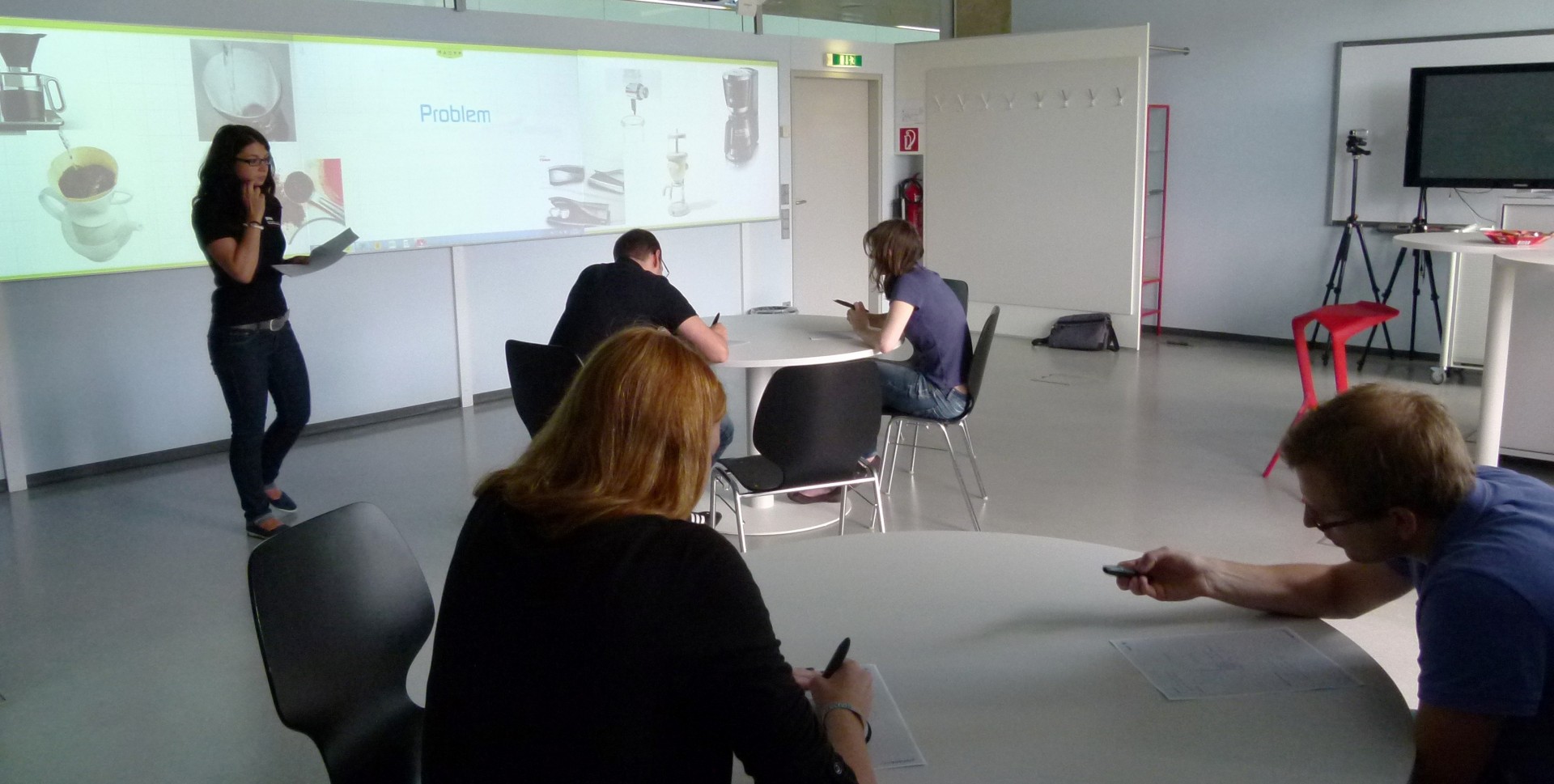Creativity and innovation are predictors of success in our knowledge-based society. With the increasing availability of digital whiteboards, the development of tools to support creativity has become an emerging field.
Since the ’70s, psychologists and practitioners have put a lot of effort in developing numerous methods for supporting creativity more effectively . Although there are a lot of creativity techniques for versatile needs and tasks, only a small set of traditional tools and media, such as pen and paper, sticky notes, flipcharts, whiteboards, and pinboards, are used. Due to the limited possibilities to edit and copy content, especially complex creativity techniques often require a huge amount of organizational overhead (e.g. copying content, placing flipchart papers on pinboards). Digital implementations usually aim to limit this overhead and increase the ease of use. However, it is not clear if the efforts of digitizing the creative process lead to the desired effect of decreased task execution time or if they even have negative side effects on creativity and inspiration. New media in creative processes change the balance of power, involvement and satisfaction of participants, as well as the general dynamics of collaborative sessions. To provide a theoretical understanding for developing adequate and practical interaction processes and applications, it is necessary to carefully study the effects of digital solutions and their impact on group creativity.
In this work, we analyzed the impacts of a digital environment on group dynamics and creative outcome when performing a complex creativity method. Therefore, we performed an experiment to compare the traditional paper-based way of performing the creativity technique SIS (Systematic Integration of Solution Elements) to its implementation in a digital, interactive environment. We use a combination of different evaluation approaches to get a deeper understanding of the emerging side effects that come with overhead reduction. In our paper we present the results of our analysis and discuss their implications on environments that are supposed to support collaborative creativity, and on creative tasks in general.


